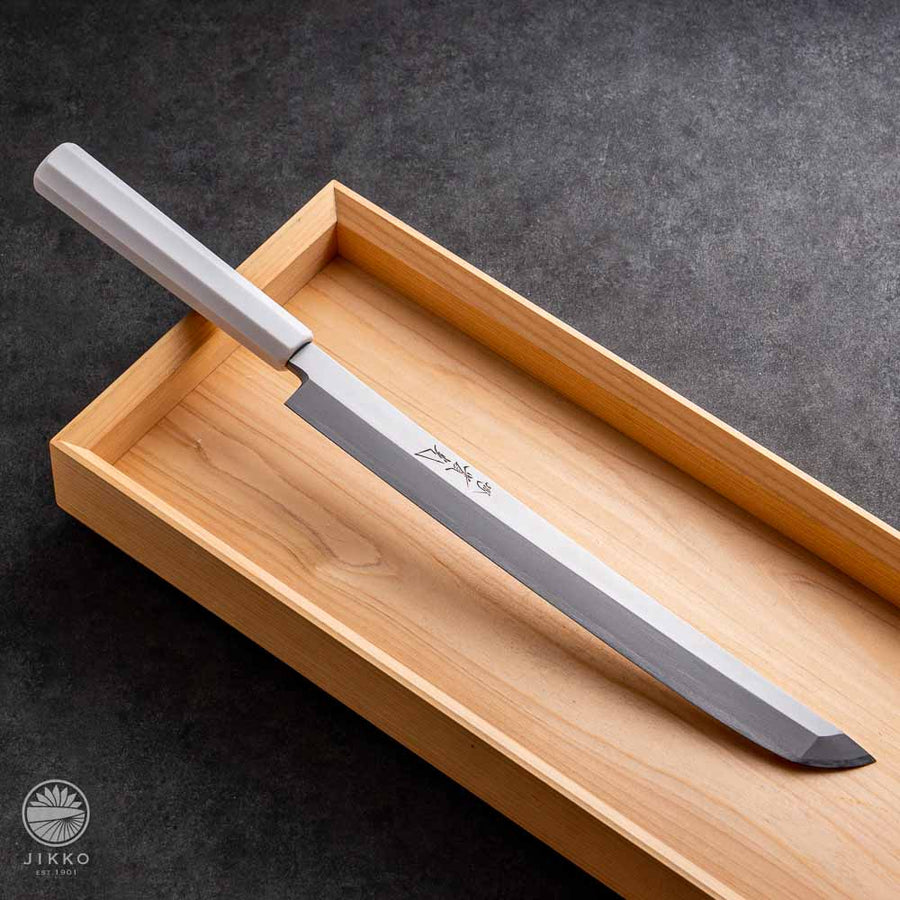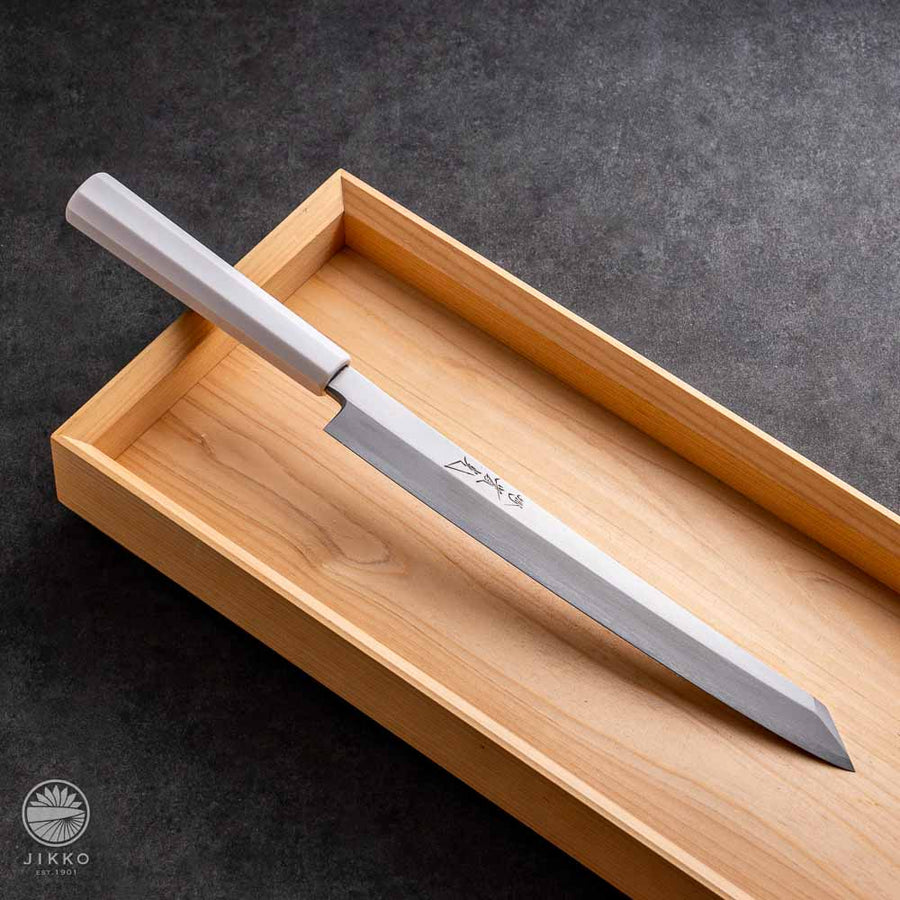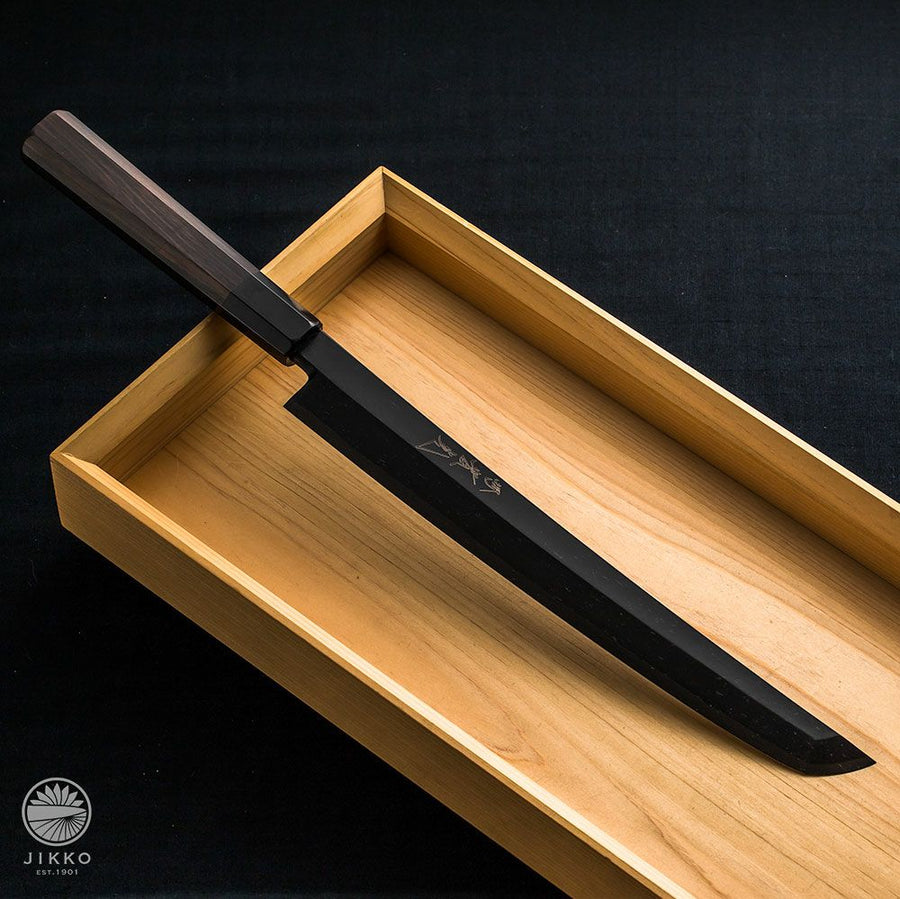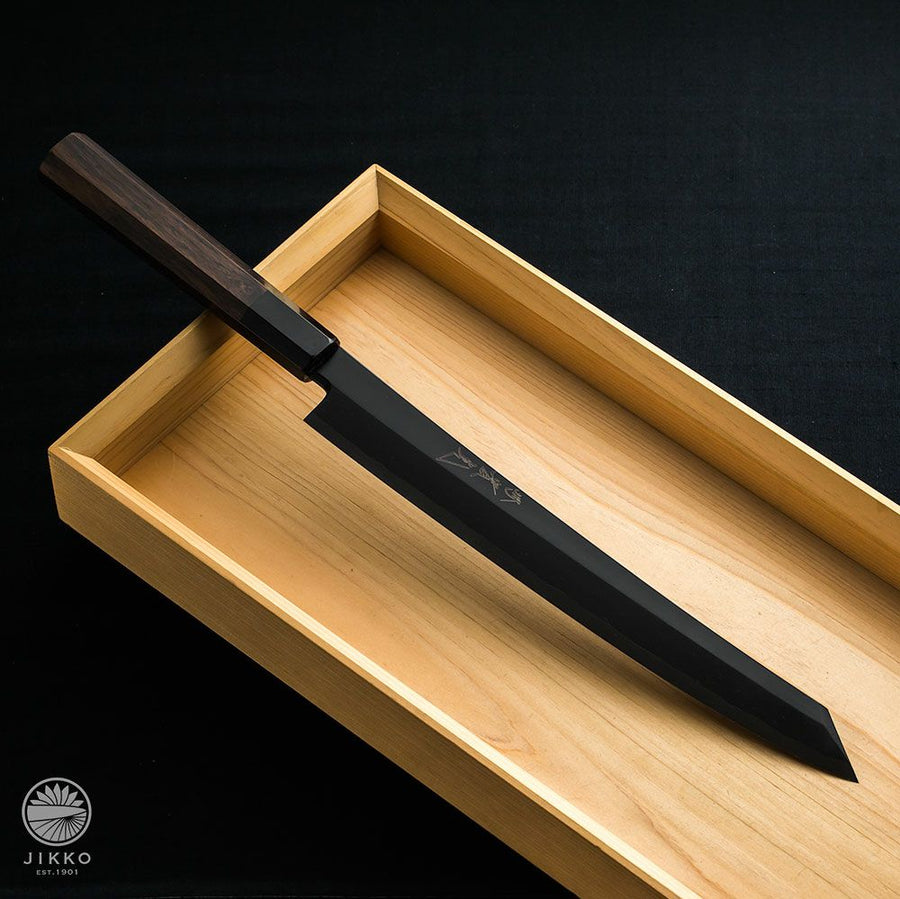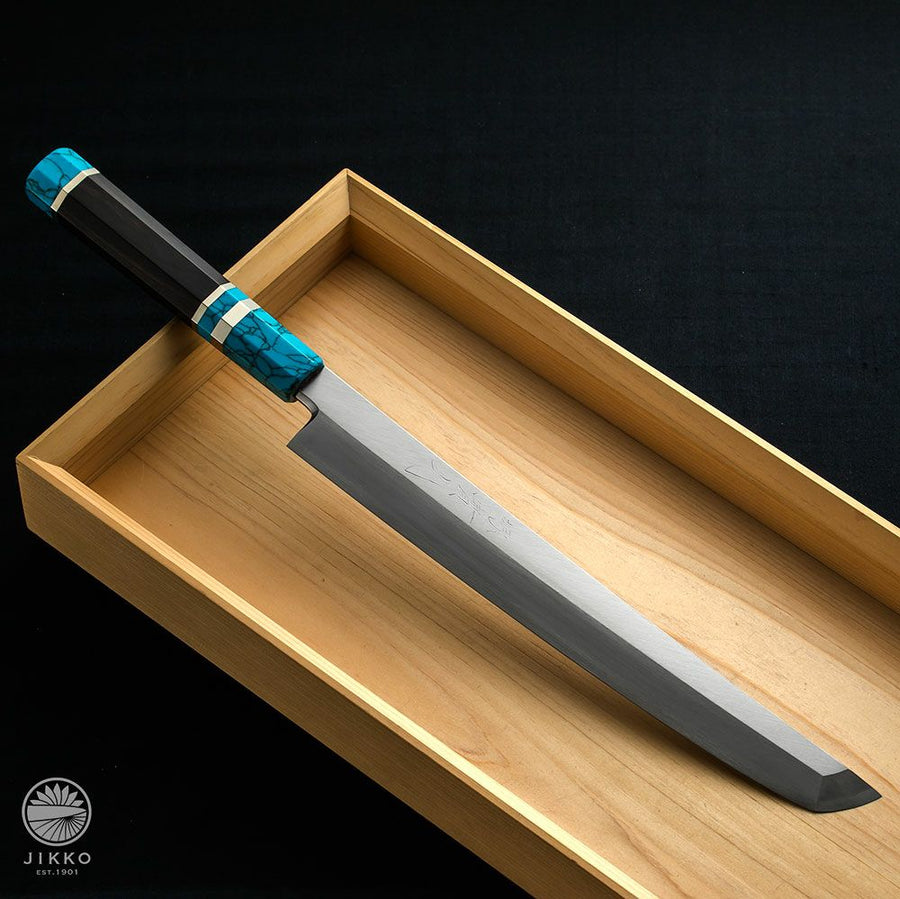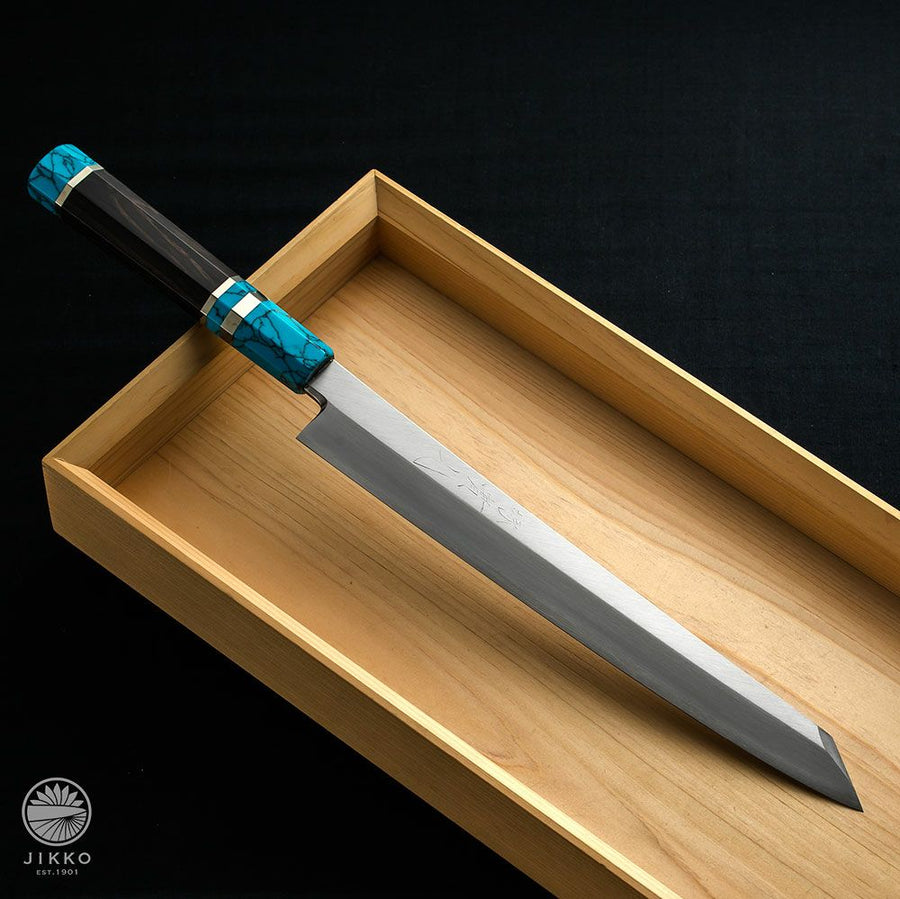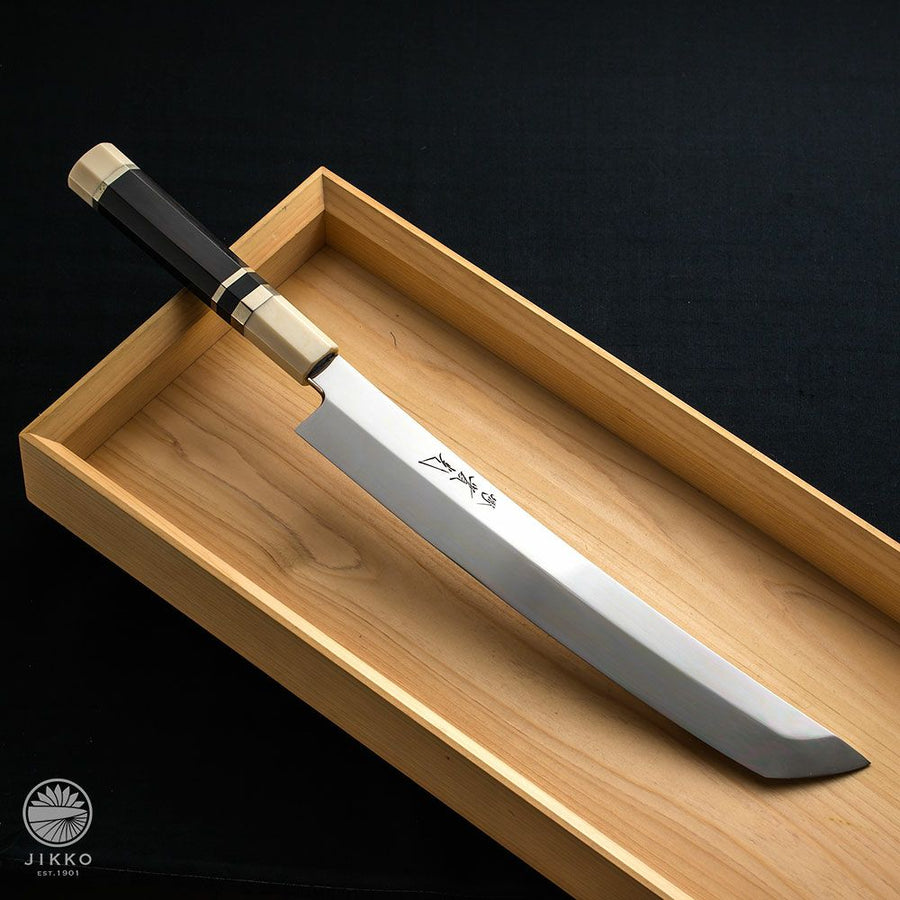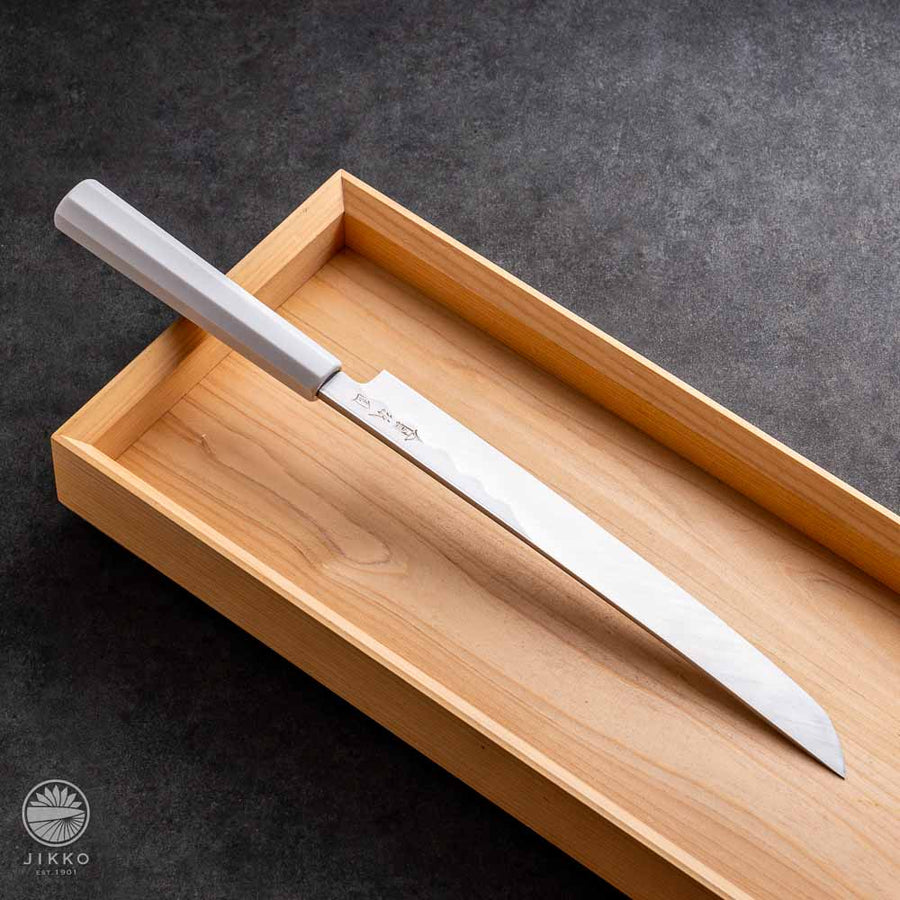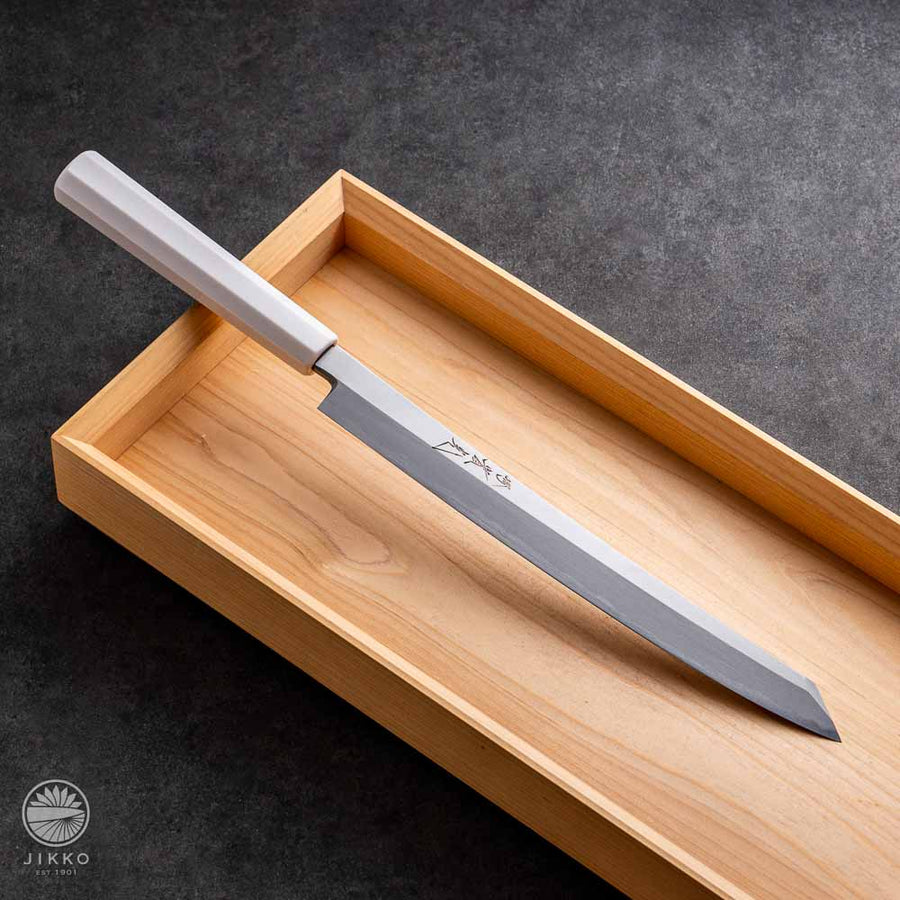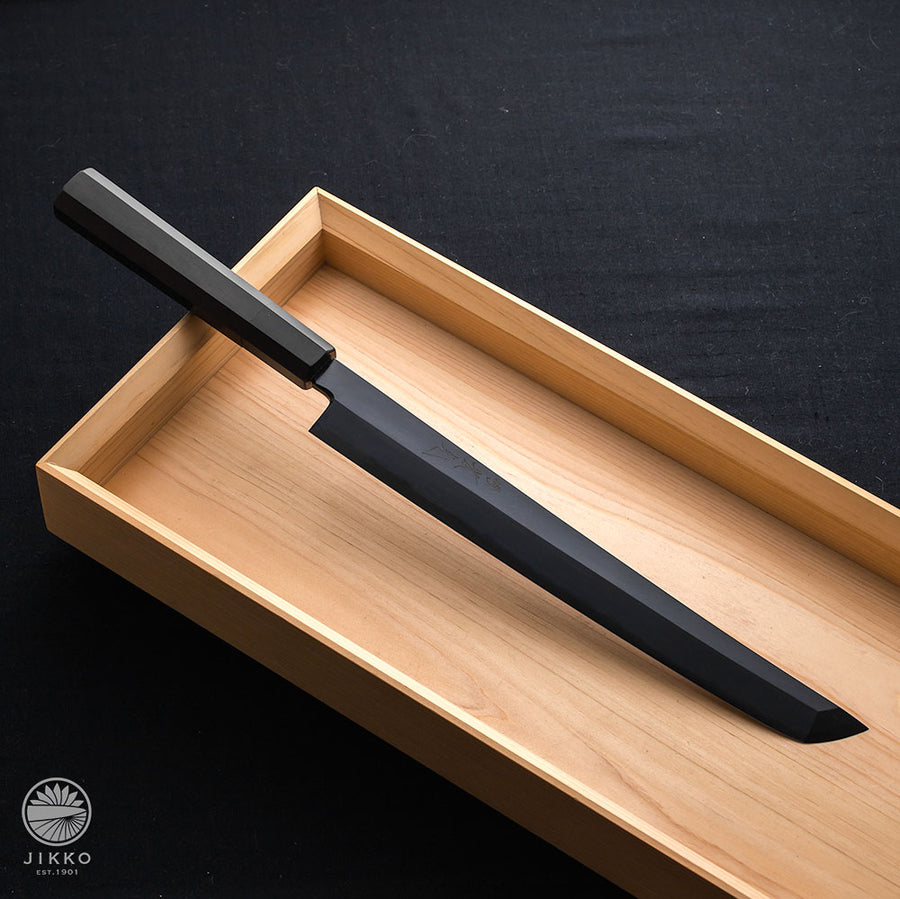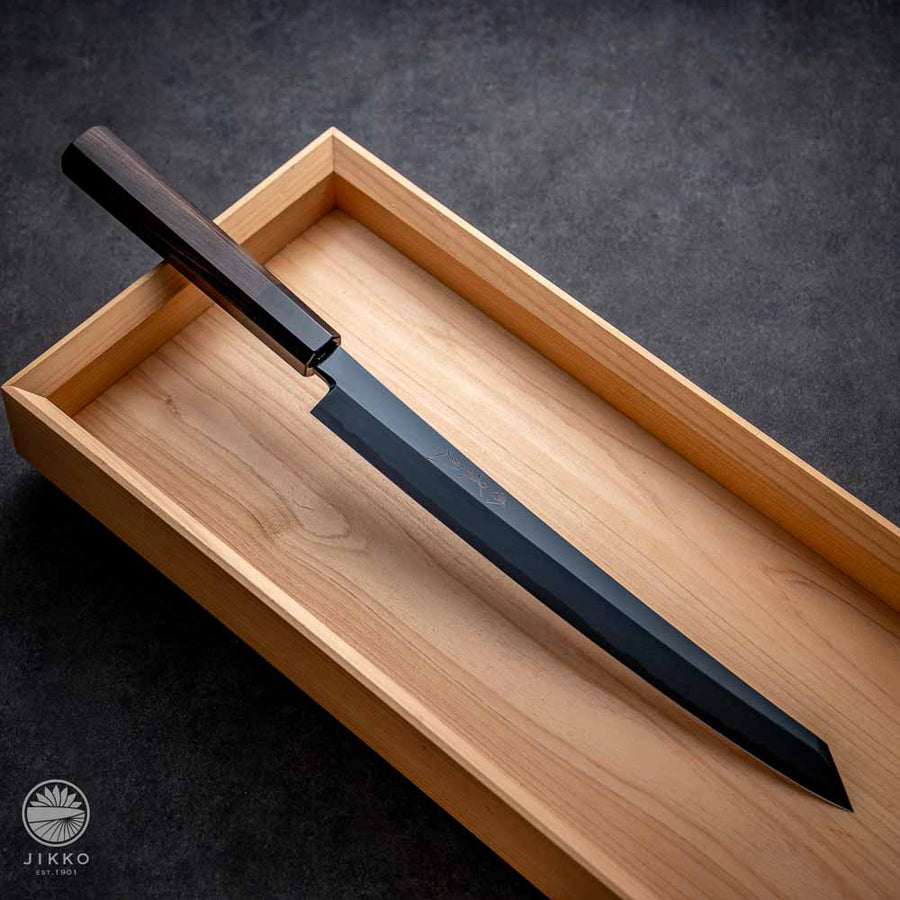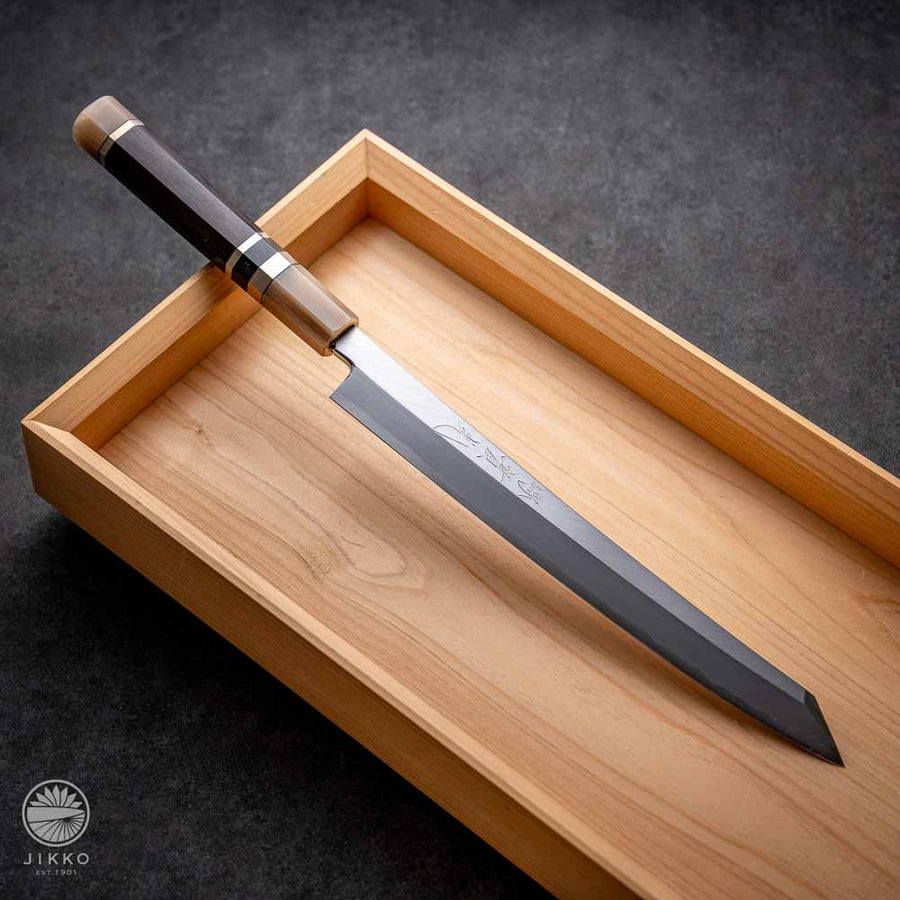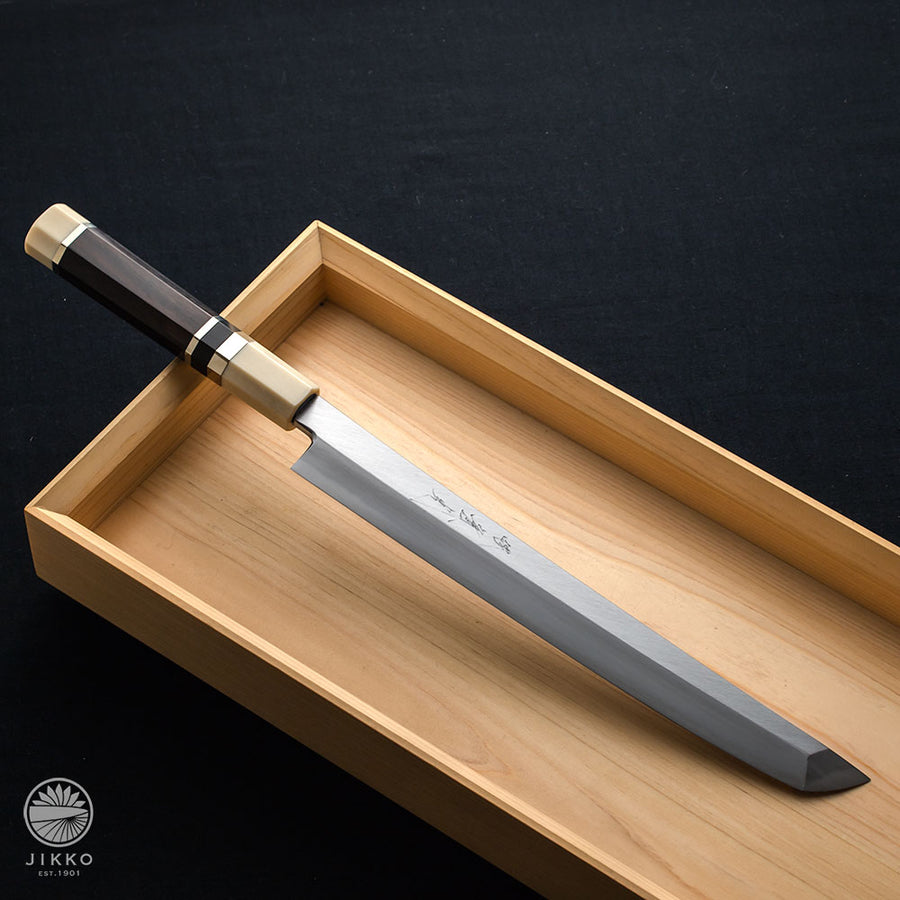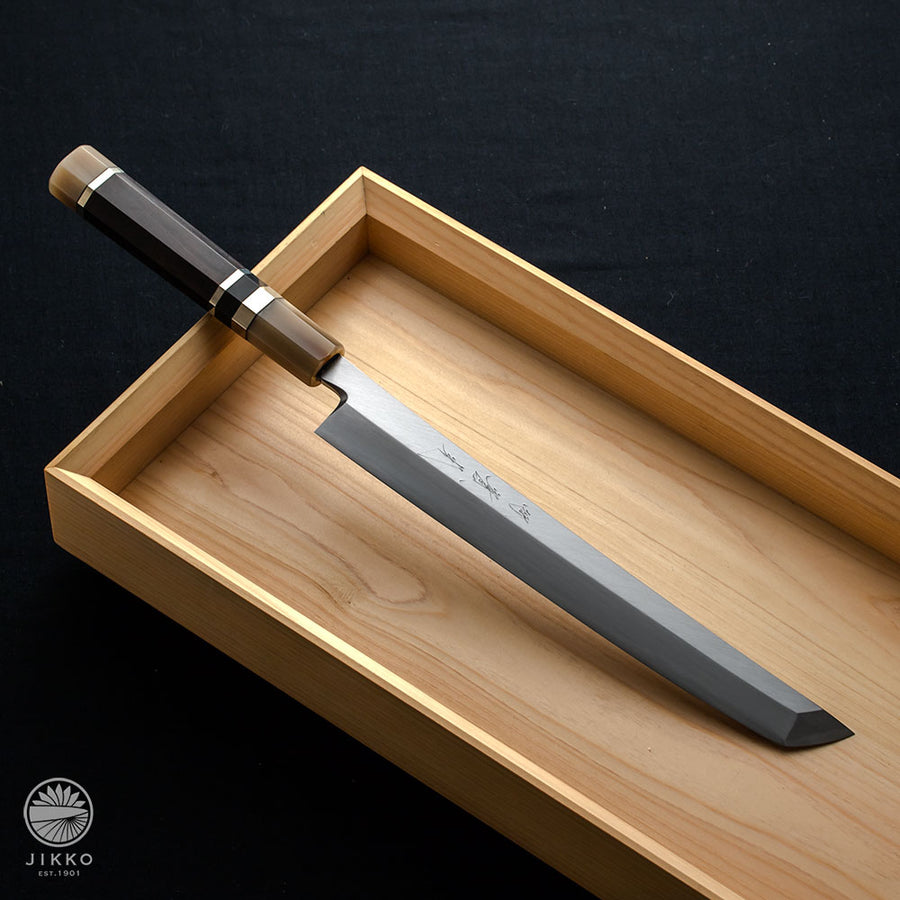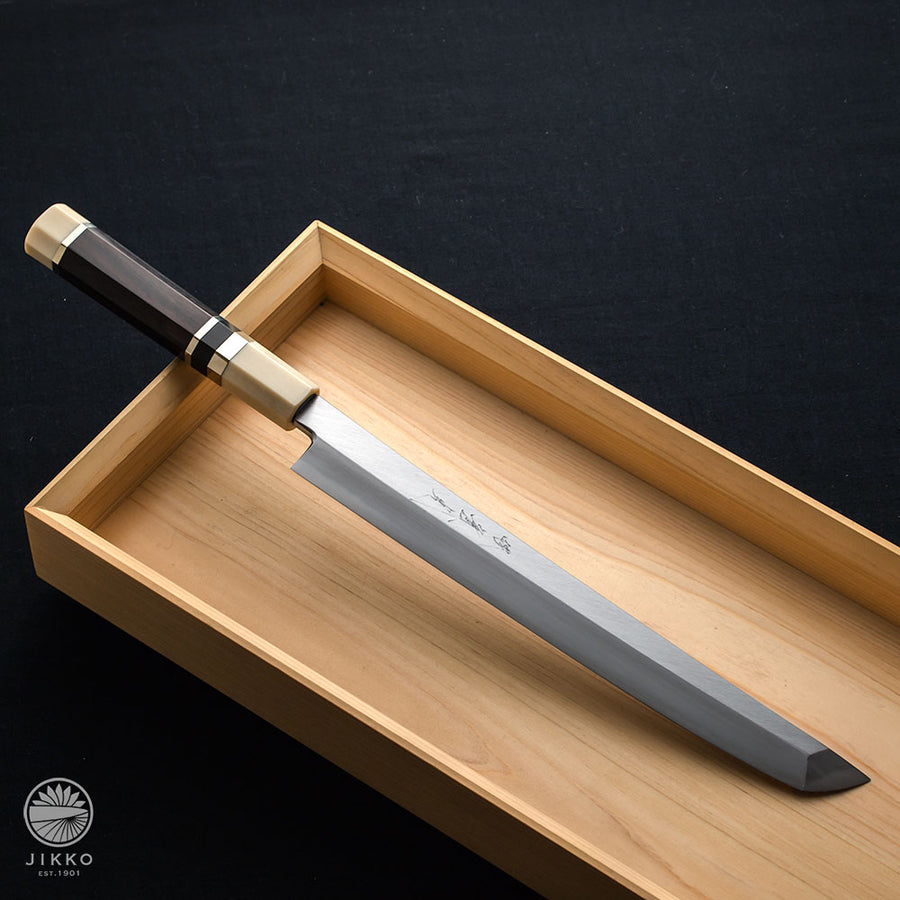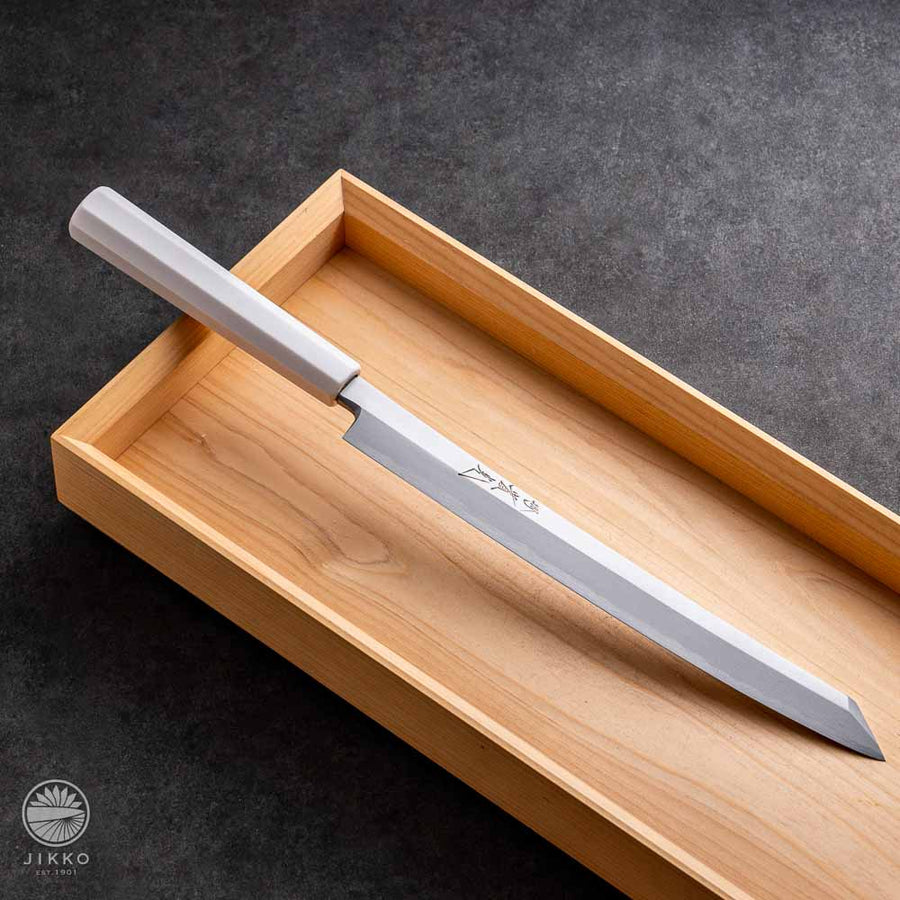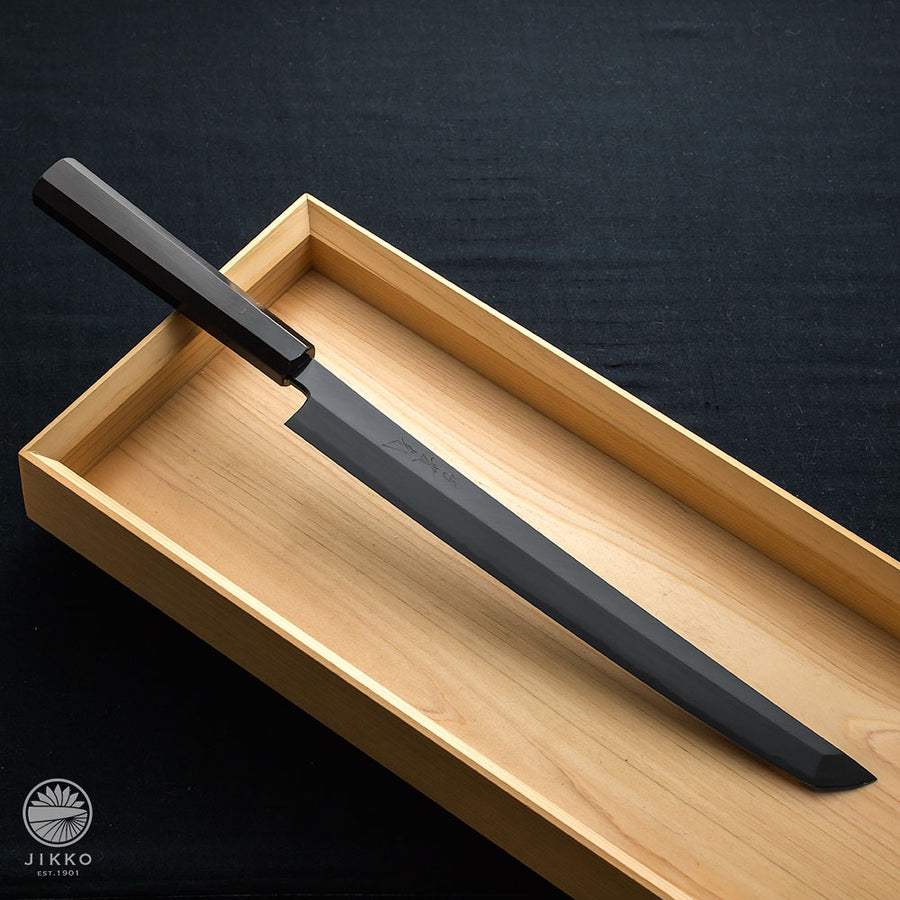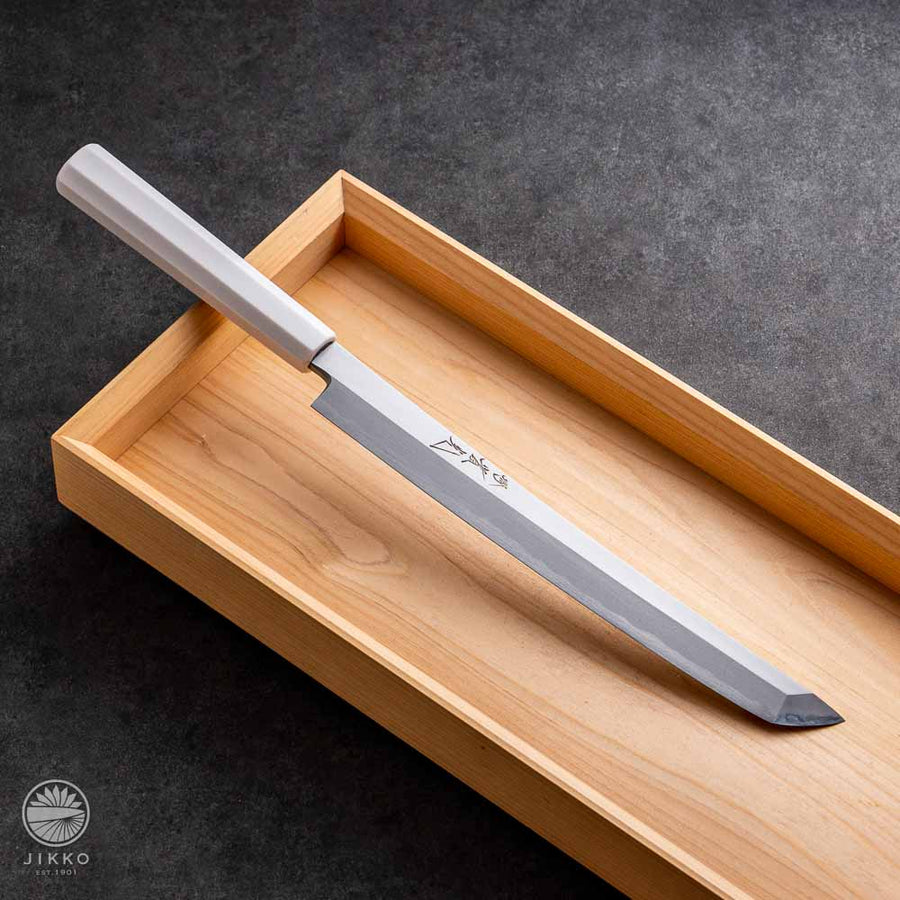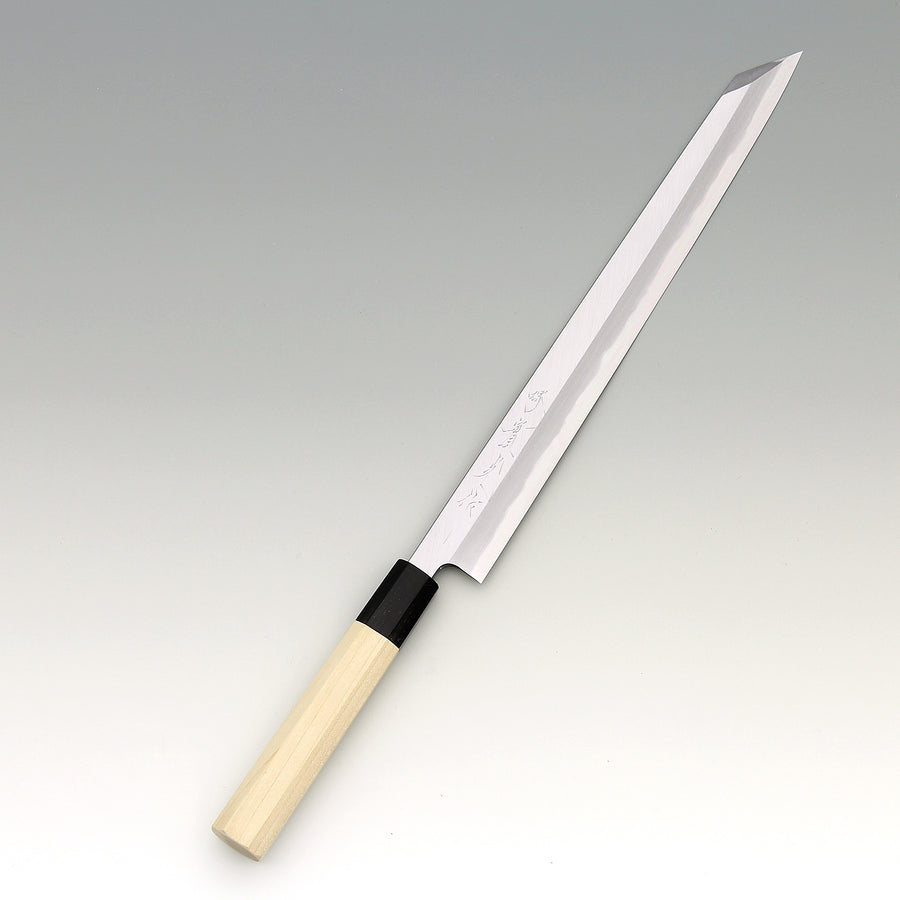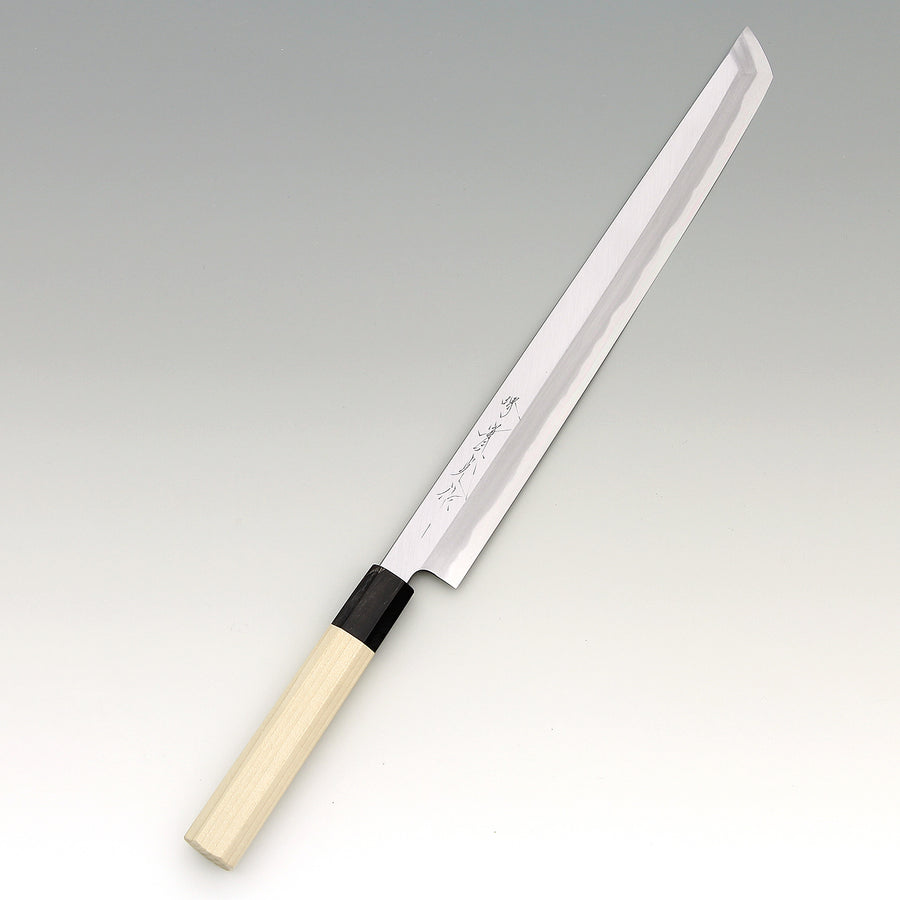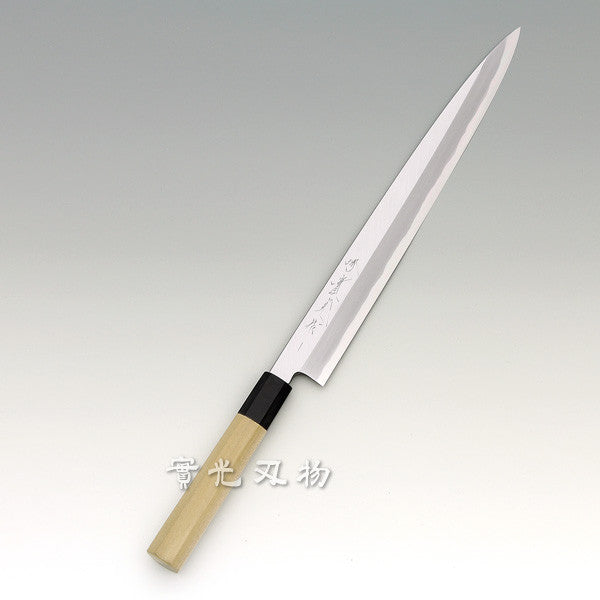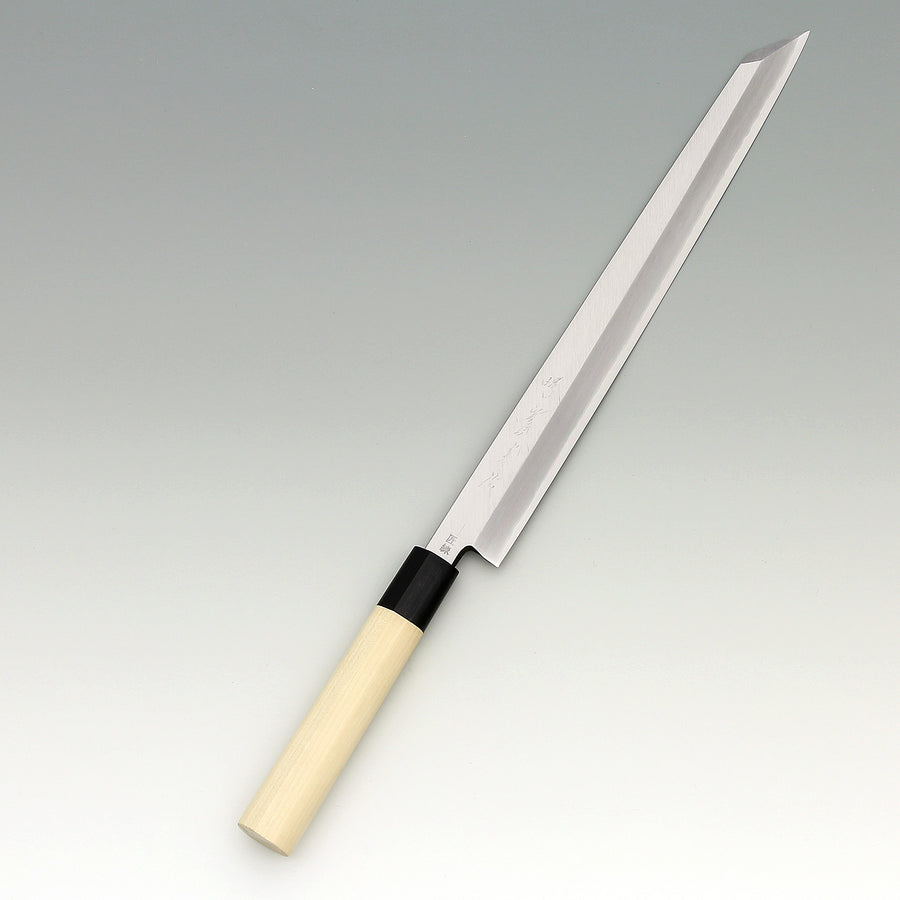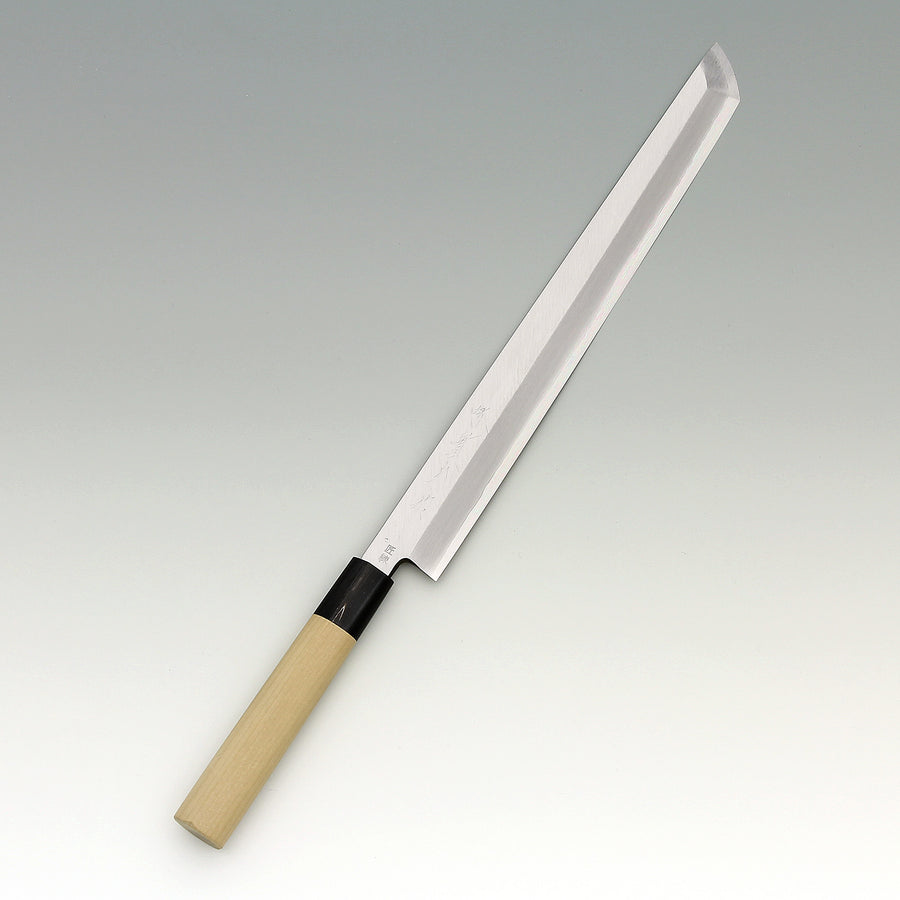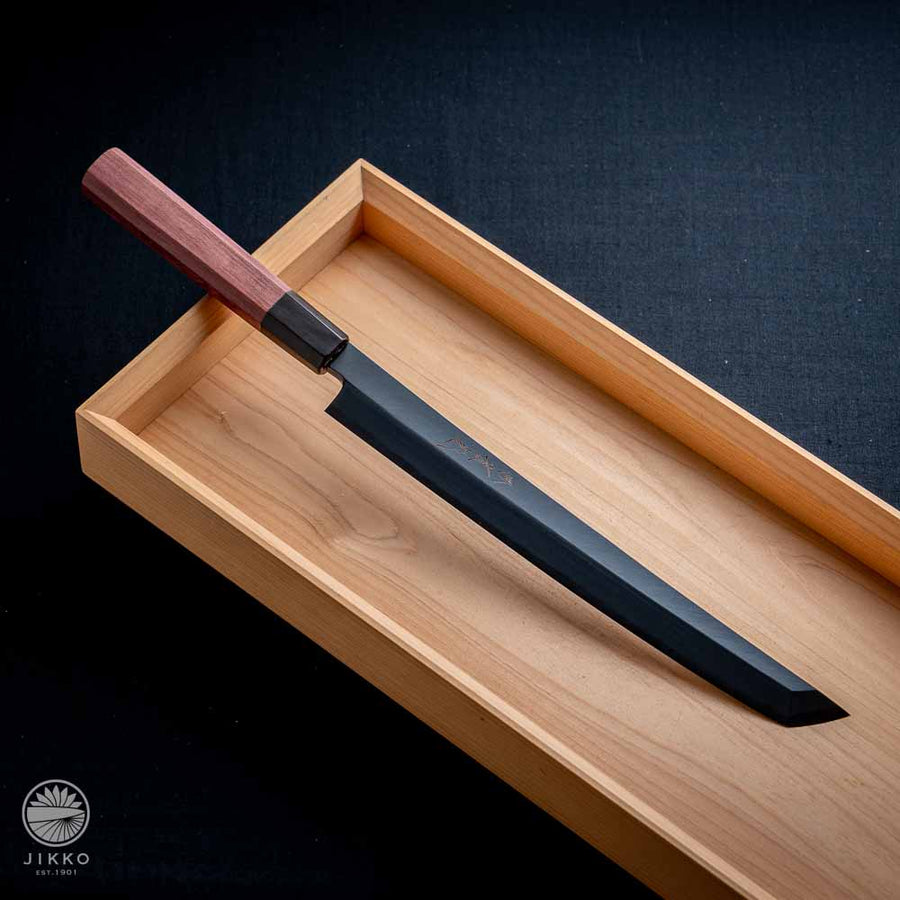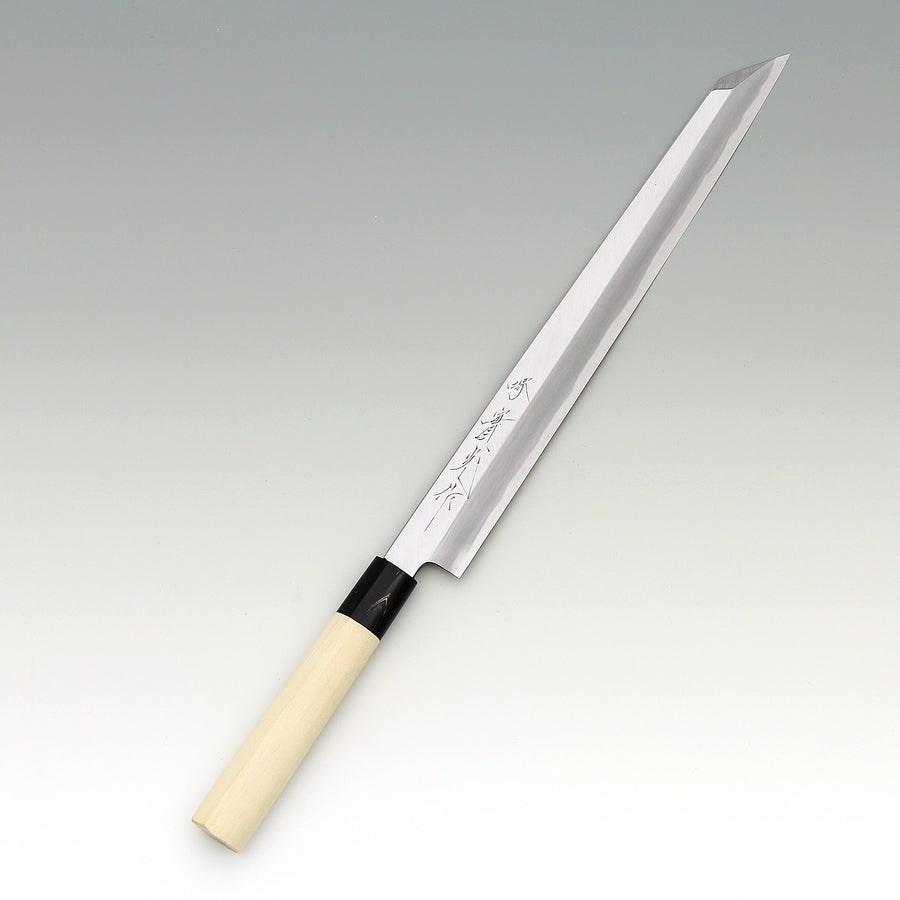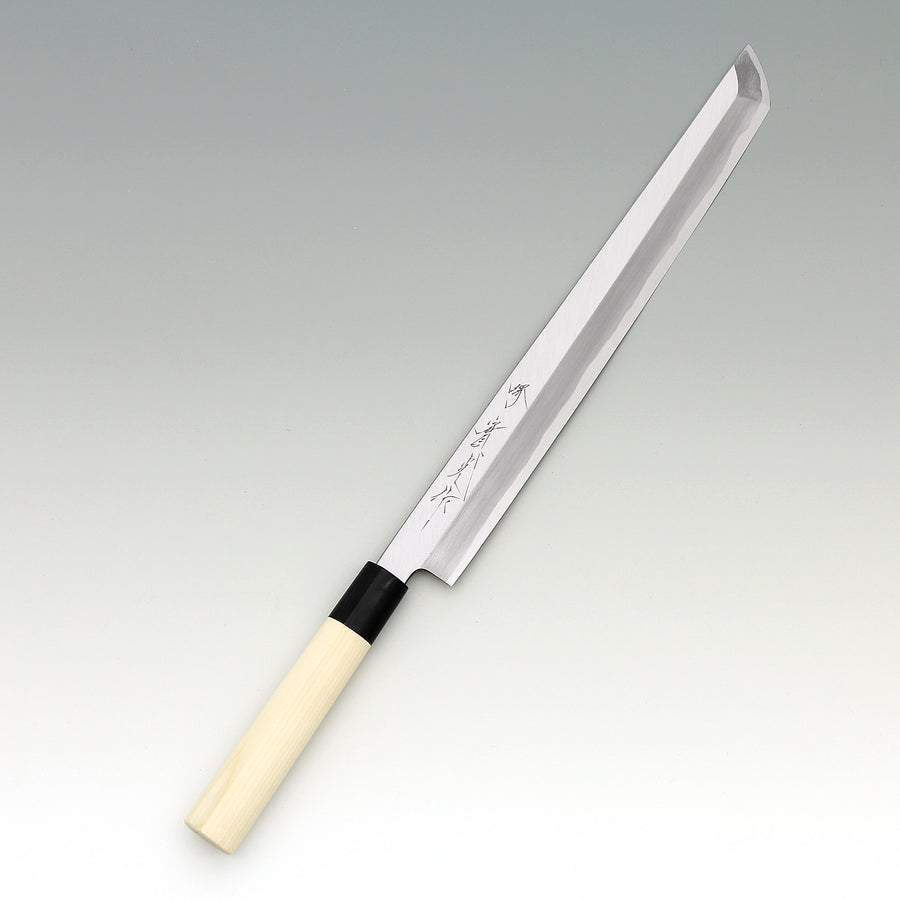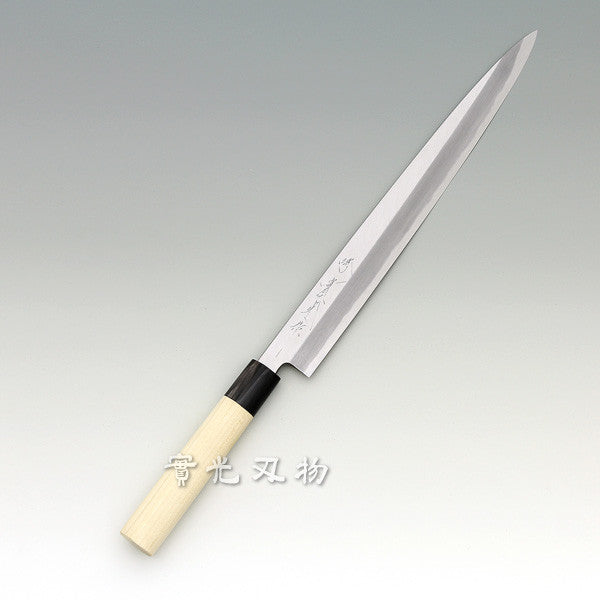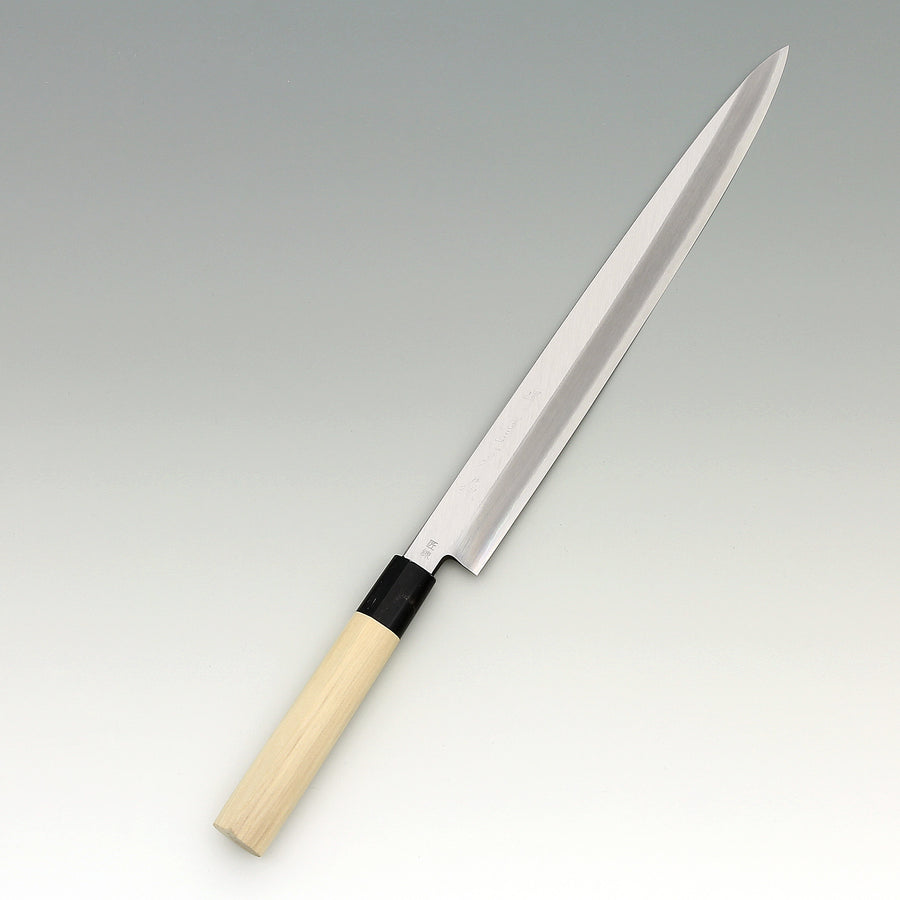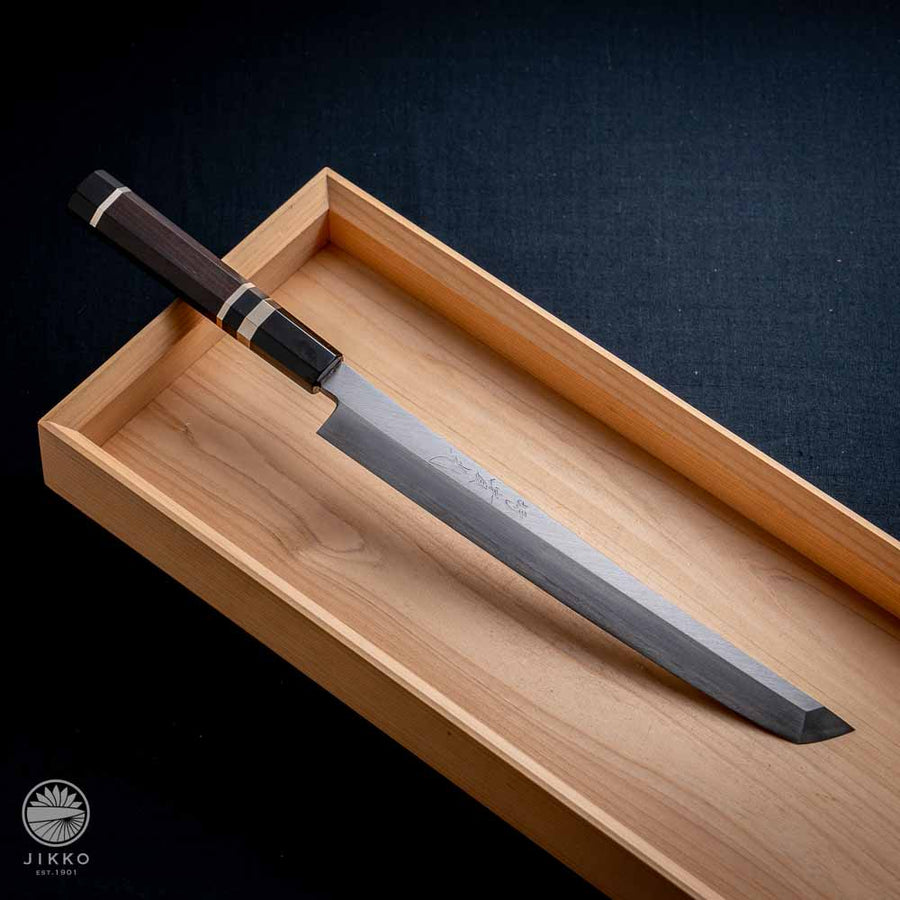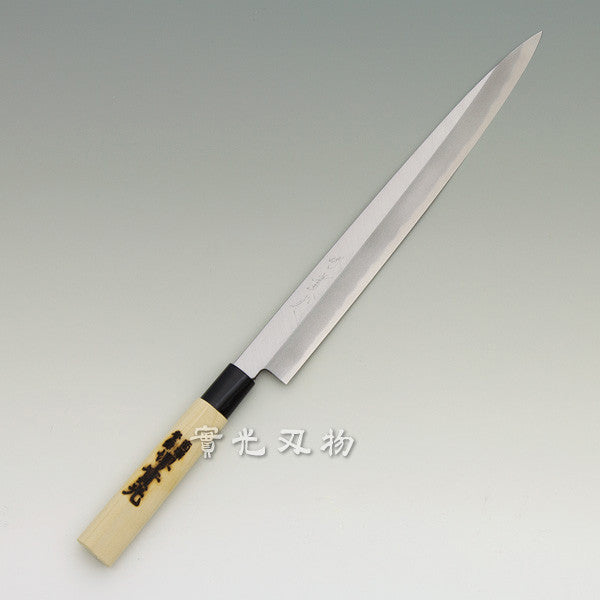
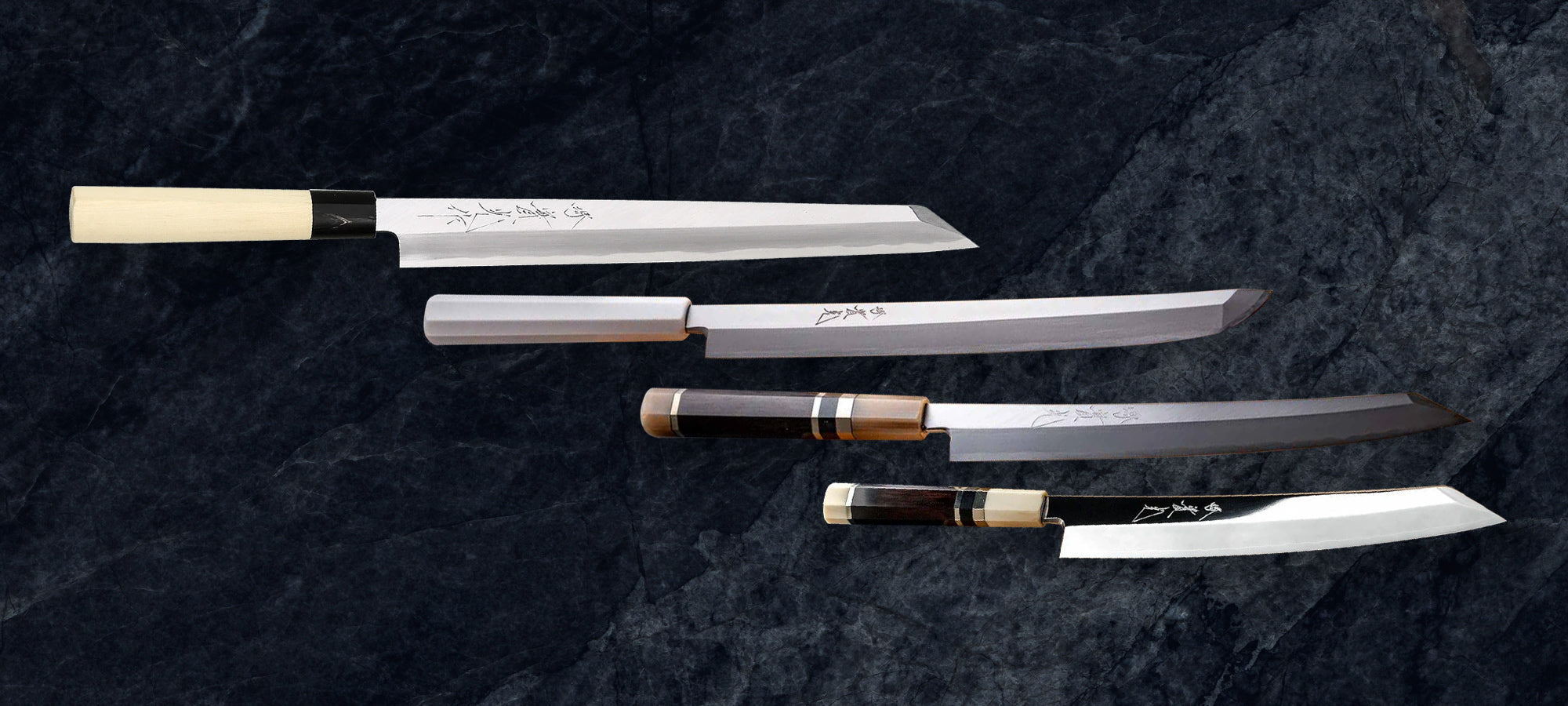
This is a list of Kiritsuke knives that can be purchased online from Jikko Cutlery, a Sakai JIKKO cutlery with over 120 years of history.
How to Choose a Grip
Blade Length



Select point
For professional chefs, the most common blade length is 300mm. In smaller kitchens, a 270mm blade is often used. For home use, 240mm is standard. Those who handle larger fish tend to use 270mm, or even up to 300mm for longer cuts.
Blade Material
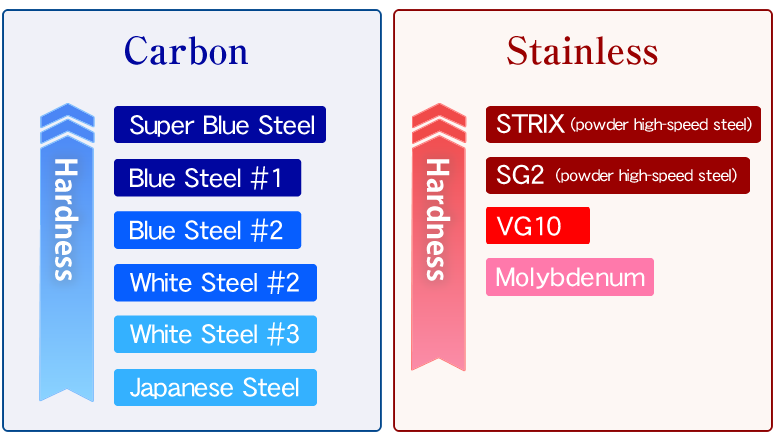
Types of Steel for Kitchen Knives
This list categorizes different types of steel used in kitchen knives. The steels at the top of each list offer the best sharpness and edge retention.
Handle type
Wa-handle

Round or octagonal shapeWood is commonly used
Select point
◾️Consider grip comfort
◾️Check balance sensation
◾️Maintenance requirements
Knife Maintenance
| Steps | Stainless Steel Knives(Rust-resistant) | Carbon Steel Knives(Prone to rust) | Icons |
| 1. Cleaning Method | Gently wash with a soft sponge and neutral detergent | Gently wash with a soft sponge and neutral detergent |  |
| 2. Remove Moisture | Wipe thoroughly with a cloth or paper towel | Wipe thoroughly with a cloth or paper towel |  |
| 3. Drying | - | Pour hot water over the blade for quick drying |  |
| 4. Light Oil Coating | - | Apply a very thin layer of vegetable oil (avoid overapplication) |
 |
| 5. Storage | Store in a dry knife stand or holder | After oiling, place in a knife stand or storage box |  |
Frequently Asked Questions
Features and Uses of Yanagi Knives
The Yanagi knife is a traditional Japanese sashimi knife designed for slicing raw fish with precision. Its long, narrow, single-edged blade allows for smooth, clean cuts.
The Yanagi knife has a single-edged blade for superior slicing, while other sashimi knives may have different blade profiles or be double-edged.
The standard Yanagi knife blade length ranges from 240mm to 300mm. Choose a size based on your hand size and intended use.
The Yanagi knife is ideal for slicing sashimi, sushi toppings, and skinning fish with precision.
How to Use a Yanagi Knife
Hold the handle firmly and pinch the blade near its base with your thumb and index finger for stability.
Use the full length of the blade in a single pulling motion to create smooth, clean cuts. Avoid sawing movements.
Lay the blade flat against the skin and pull smoothly to separate it from the flesh without damaging the meat.
While possible, it is not recommended for cutting hard foods or bones, as it may damage the blade.
Yanagi Knife Maintenance
Use a whetstone at a 15-degree angle, sharpening only the single bevel side carefully and evenly.
Depending on usage, sharpening every 1-2 months is recommended to maintain optimal performance.
Clean and dry immediately after use. Applying a light layer of oil can help prevent rust, especially for high-carbon steel knives.
Hand washing is strongly recommended to prevent damage from high heat and harsh detergents.
Choosing the Right Yanagi Knife
Stainless steel is low-maintenance and rust-resistant, making it ideal for beginners. Carbon steel offers superior sharpness but requires more care.
Prices range from $100 to $300, depending on materials and craftsmanship.
Professional Yanagi knives use premium materials and are precisely balanced, while home-use knives prioritize affordability and ease of handling.
